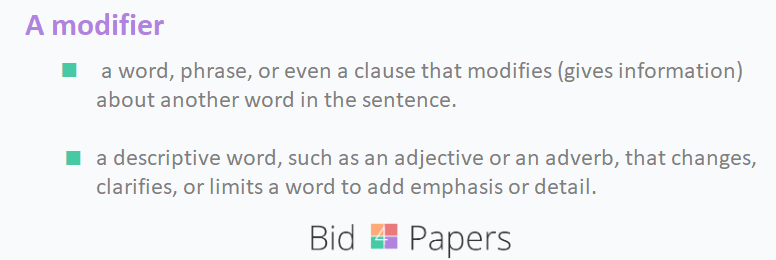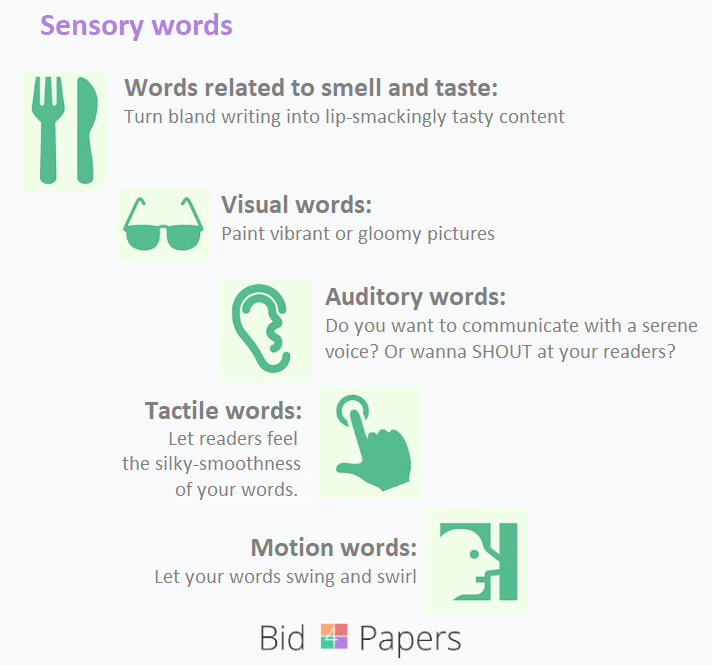
Narrative Essay: Inside Out
What is a narrative essay?
How is it different from other essay types?
How to write a narrative essay so it would impress a teacher, or any other reader, and be worth sharing and retelling?
This ultimate guide on narrative writing gets all the answers straight.
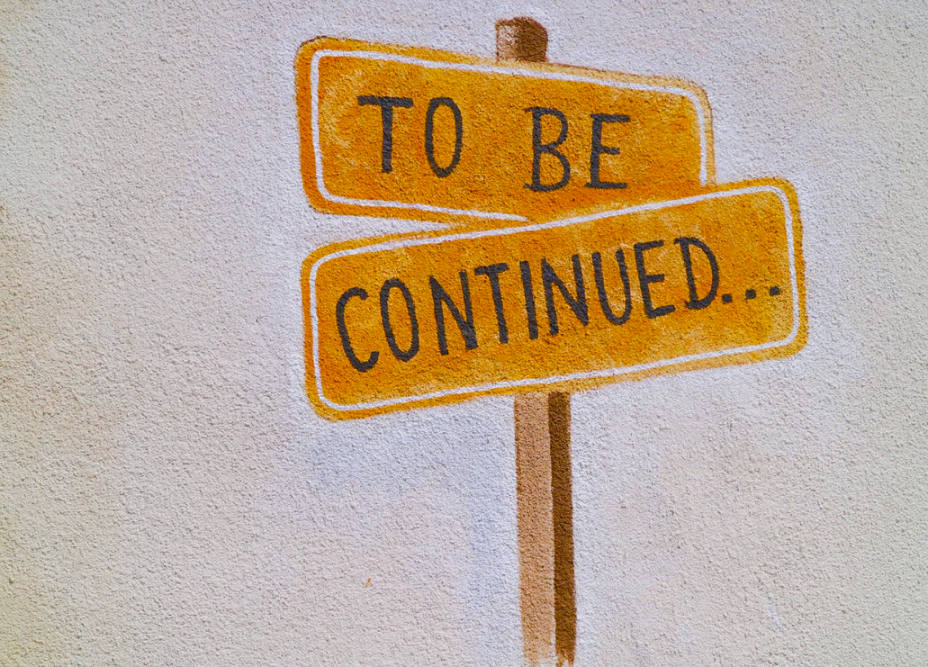
Table of Contents:
What is a Narrative Essay?
Why do we call it narrative?
Because you use a particular way of telling your story and explaining its events, known as “narrative.” Here goes the narrative definition:
Beemgee described it best:
Essay Outline: General
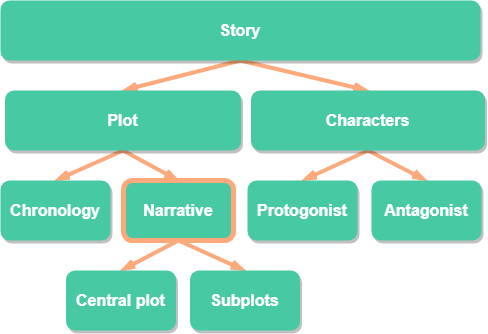

Narrative turns a story into information and influences the way how readers will perceive it. In other words, narrative builds your story.
So, your narrative essay is a type of paper, where you tell a story using a particular format and all elements of storytelling.
Okay, we know what you are thinking:

Source: Giphy
Keep calm! Everything is much easier than it seems.
Purpose of Narrative Essays
Narrative essays are about telling stories to your readers. It’s their fundamental purpose. You, the writer, tell about the personal experience but also make a point for readers to understand why you tell about it and why your story is important to share.
In a narrative essay, you simply guide a reader and allow them to draw own conclusions. You don’t criticize anything and don’t try to persuade them with arguments or prove them anything. That’s exactly what makes a narrative essay different from other academic papers.
Let’s compare:
| Persuasive essays | Narrative essays | |
| Purpose | to persuade with definite arguments | to inform |
| Mood | rational | emotional, imaginative |
| Style | analytical, objective, 3rd person | emotive, subjective, 1st person |
| Examples | Essays in political magazines | Personal essays in The New Yorker |
Feel free to check our ultimate guide on how to write a persuasive essay and see the difference between these two essay types in more details.
Why write personal narrative essays?
Doing so, you learn to voice your opinion, views, and beliefs to the world. You learn to express and share thoughts consistently and intriguingly so people would get involved and inspired by your story.
It’s all about storytelling:
A human brain retains 70% of information through stories and 95% – through emotions; so the only way to make people want to listen to you is to tell them a story.
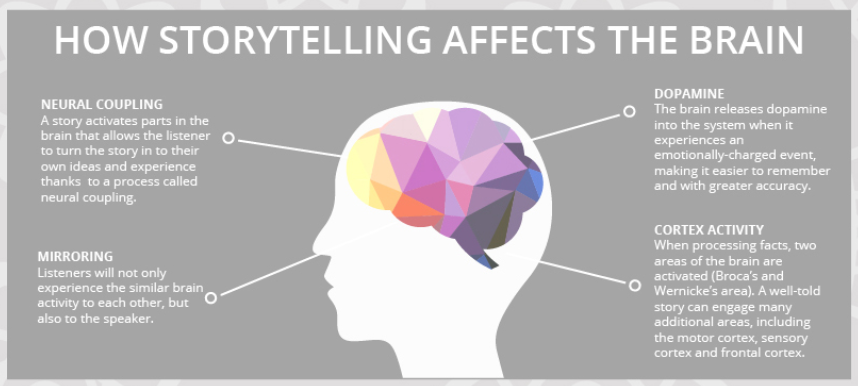
And such writing assignments as narrative essays help you learn how to tell stories so that others would listen to you.
Your narrative, if written right, is the best way to share views and make others see the world through your eyes. It’s the best way to make them listen, broaden the mind, and be more creative about own experience and lives.
The power of personal narrative is hard to overestimate. Just watch this awesome TED talk by Christian Jensen! Isn’t inspiring and motivating enough?
Characteristics of Narrative Essays
Important!
A narrative essay doesn’t equal a short story. It’s not fiction. It’s still an academic paper, non-fiction writing about an experience that actually happened.
If you write a fictional story, it’s no longer a narrative essay.
Compare:
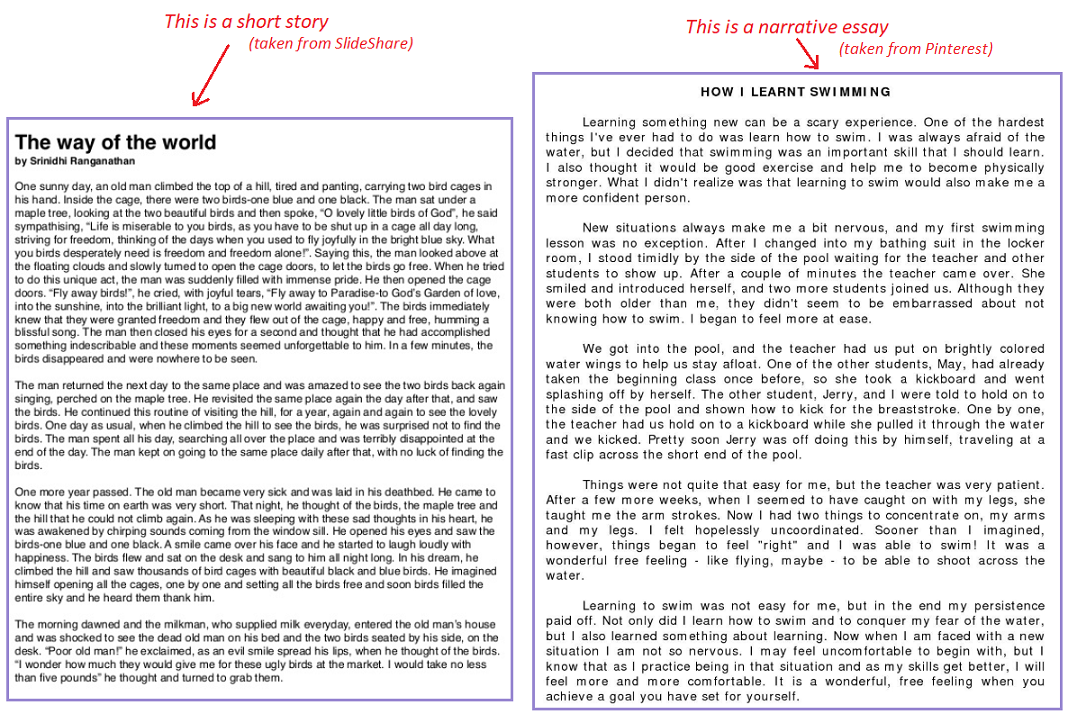
So, the narrative essay characteristics are:
- Informal, written in the 1st person. (You are a storyteller here.)
- With a purpose to inform, not argue or teach.
- Describes a person, a scene, or an event in details and chronological order.
- Non-fictional, tells about the actual experience.
- Includes the elements of a story but follows the structure of an essay.
The Structure of a Narrative Essay
As well as any other college paper, a narrative essay has its structure. But given that it’s kinda informal writing about your personal experience in real life, it will have a format and elements peculiar to narratives (storytelling).
Here they go:
1 – Elements
Every narrative should have five elements to become a story: plot, setting, character, conflict, and theme. Sounds difficult at first glance, but what if look closer?
- Plot: it’s the events happening in your essay (story). For example, you write about how you learned swimming and describe what you did/how it influenced your mood and swimming skills.
- Setting: it’s when and where the events happen; in other words, it’s location and time. For example, you learned swimming in the pool of your local school, in the winter of 2013.
- Character: it’s a protagonist who drives a plot of your story. Also, there can be supporting characters. Thus, you are the protagonist of your essay about swimming, and the supporting characters are your friends May and Jerry who went to the pool with you.
In classical storytelling, a character is a hero who has to set off on a journey and deal with all antagonists and conflicts to come back home with a reward or wisdom.
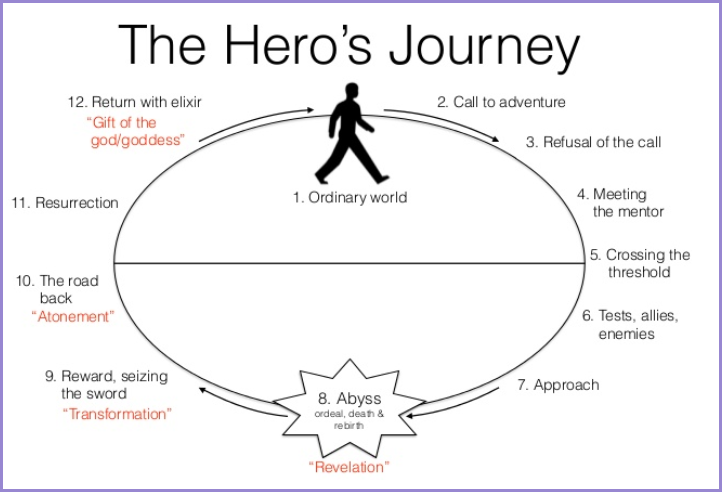
Source: SlideShare
It was Joseph Campbell, mythologist who developed the hero’s journey in literature. Read his book The Hero with a Thousand Faces if want to learn the tricks behind writing compelling stories.
Or, check The Writer’s Journey, the book by Disney’s screenwriter Christopher Vogler to reveal storytelling secrets behind all movie blockbusters. It’s a kinda practical guide to above mentioned The Hero with a Thousand Faces.
- Conflict: it’s a problem the character resolves, a moment of tension he needs to win through. In our example, the conflict was the challenge for you to swim with legs and arms together.
In literature, a conflict is defined as a hero’s struggle with opposing force. These forces are three: other characters (enemies), outside forces (society, nature, technology, fate), and a hero himself (his internal conflict).
In your narrative essay, feel free to use any of those three conflict types.
- Theme: it’s the moral of a story. What have you learned? What do you want the readers to understand? Back to the example with the essay about swimming: you’ve learned to swim; you want to encourage readers to learn new things, be brave and not afraid of challenges.
To combine all the five elements into a strong narrative essay, make sure you follow the format known as the narrative arc. It’s five phases your plot should get through to become a story.
2 – Format
In short, a narrative arc is the sequence of the events in your story.
In details, it’s the chronological construction of your plot, and it consists of five components: exposition, rising action, climax, falling action, and resolution. Back in 1863, German novelist Gustav Freytag studied common patterns in stories’ plots and described a narrative arc as a pyramid:
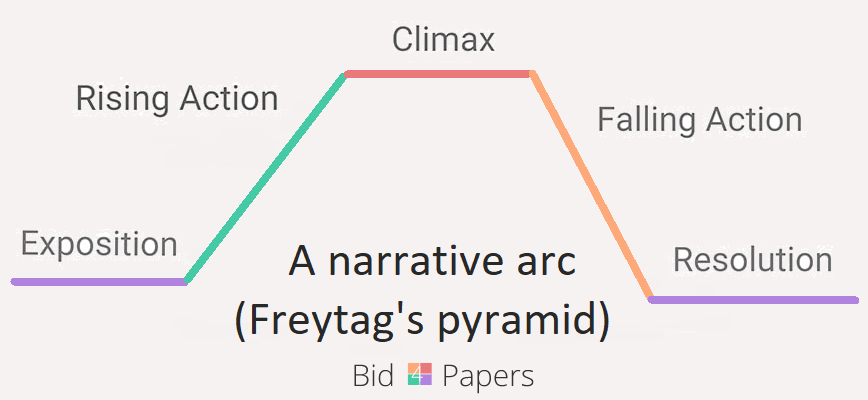
Read more about a narrative arc at Reedsy.
And here’s a short description of narrative arc components, with Cinderella as an example.
-
-
- Exposition: it’s the introduction of your story, with the background information about main characters and setting. Cinderella: awful life, evil stepmother and sisters.
- Rising action: it’s the moment when conflict appears, a trigger that creates tension and makes the readers understand what your story is about. Cinderella: gets invited to the ball, makes clothes.
- Climax: it’s the main event of your story, the height of tension, when the protagonist faces the truth, needs to make a choice, etc. Cinderella: goes to the ball, meets a prince.
- Falling action: it’s the result of that choice, the moment of conflict resolution. Cinderella: time to go, back to the awful life but with the new experience.
- Resolution: it’s the conclusion of your story, with a moral or point of view you wanted to share. Cinderella: the prince finds her, they live happily.
-
If you want your narrative essay to rock, make sure you format it with all five components in mind. Or, use three basic ones at least: exposition (in the introduction), climax (in the essay body), and resolution (in your essay conclusion).
3 – Structure
You need to structure a narrative essay by the rules of academic writing. For that, use a standard 5-paragraph essay format:
Write an introduction (the exposition of your narrative essay). Don’t forget to add a hook, a thesis statement, and a description of your topic.
Craft three paragraphs of your essay body (the rising action, climax, and falling action). Tell about the setting, the characters, events that happened, conflict, and its aftermath.
And write a conclusion (the resolution). Explain the moral of your story, why it’s significant, and what the audience might want to do after reading it.
Narrative Essay Structure


4 – Language
More often than not, narrative essays are about personal experience and thoughts. So you need to express them with a big voice for readers to believe your story. In writing, it refers to language patterns and sentence structures, as well as your tone and ability to “draw” images with words so readers could imagine themselves in the described situation.
How to do that?
- Use descriptive language: consider synonyms, don’t repeat one and the same word in every sentence; add modifiers (adjective and adverbs) to describe the events but know when enough is enough.(Here go the examples for you to avoid misplaced and dangling modifies in your texts.)

- Use power words: avoid passive voice and weak adverbs. Often, a stronger noun or verb can express your thought better than vague modifiers.(Here’s the checklist for you to look over your adverbs and decide whether to leave or remove them from essays.)

- Use sensory words: they are powerful modifiers that help readers smell, see, hear, feel, or taste the events of your narrative essay. Best described by Henneke Duistermaat, these words work like magic for your writing.(Here’s the list of sensory words you can use whenever appropriate.)

- Mix simple and complex, long and short sentences in your narrative essay for better rhythm. It influences readability, and it will be easier for the audience to follow your thoughts and get emotionally involved in your story.(Read this example by Gary Provost. See how the text rhythm changes when he mixes the sentences of different length?)

- Stay consistent: follow the narrative arc of your story, and don’t tell anything that didn’t happen.
How to Write a Narrative Essay: Step by Step
The process of narrative essay writing is not that different from other college assignments. First, you need to choose a topic and do research on it. Second, you craft the outline with as many details as you can and start writing a draft. Third, you revise the essay, edit it, and submit to a teacher for review.
Like taking candy from a baby, right?
Not quite.
Here’s how to write a personal narrative essay so that it will not only help you get a high grade but also wow and inspire the readers.
Step 1 – Choose a Topic
As a rule, teachers give you the freedom of choice when it comes to the narrative essay topics. And that’s the problem. You just sit and can’t come up with the idea of what to write. Here is the risk of choosing the very first topic that comes to your mind, but don’t do that!
The success of your narrative essay depends on its topic too. You need to choose something both interesting to you and appealing enough to hook the audience. For that, do brainstorming:
- Ask yourself questions on what bothers you and what you’d like to tell or discuss with others.
- Use social media for brainstorming your narrative essay topic: what your peers discuss, what they share, what message you’d like to send with your essay.
- Take a walk and think, think, think until you come up with an idea.
- Try free writing: take a pen and a notebook and just start writing down all thoughts that come to your mind. Re-read what you’ve written. Are there any ideas you could use as a topic for your narrative essay?
Here go topic examples. (If stuck with choosing yours, feel free to ask our writers for help.)
Topics to Choose for Your Next Narrative Essay
| Your experience | Your childhood | Your school years | ||
|---|---|---|---|---|
| Relationships | Morality | Travelling | ||
| Your interests | Your student life | Imagine if… |

Experience:
– The most frightening experience I ever had.
– How I learned swimming (cooking, playing guitar, etc.)
– It was the moment I changed my life philosophy.
– The most embarrassing moment of my life.
– Why I’ll never support vegans again.
School years:
– My favorite subject in school was… You’ll never guess.
– Why my English teacher could be your best friend.
– How my best friend from school influenced my life.
– The day when my parents said no to my homework.
– I participated in primary school events, and I regret it.
Childhood:
– My most memorable birthday party.
– Why I’ll never say thank you to my father.
– How I stole a cat that meowed on my dog.
– The only game I miss from childhood.
– The day when I cried for the first and last time in my life.
Relationships:
– This friendship breakup cost me a year of life.
– My worst quarrel with parents.
– The friend zone none of you would handle.
– About Cathy, a person I fear losing the most.
– This joke cost me the best friend.
Morality:
– It was the hardest decision for me.
– They’ll never call me a coward again.
– That’s why it’s okay to lie sometimes.
– How to treat strangers well if they don’t do the same.
– Are you ready for rebel acts for the sake of goodness?
Interests:
– The song/movie that touched me the most.
– The book character I associate myself with.
– The famous person from the past I’d like to meet.
– If I were a politician, I’d be…
– The superpower I’d like to have, and why.
Traveling:
– The place in the world everyone needs to visit.
– It was my worst trip ever.
– How travels to the countryside can change your world view.
– The best place for a family vacation.
– Top things to take with you to the mountains.
Student life:
– The most exhausting exam I had in college.
– How I dropped out of college and what happened.
– The moment I’ve understood: college life put me in depression.
– This person influenced my social life in college.
– Why I decided not to enter university.
Imagine if:
– You had a time machine.
– You were a book character.
– You were born in a different country.
– You’ve become a superhero.
– You’ve wakened up being an animal.
Step 2 – Outline the Details
Unlike with argumentative essays, narrative ones are about your personal life and experiences; so, you won’t need any specific research to support facts, arguments, or your thesis statement.
However, you need to organize thoughts so you could make a claim for your thesis and see if there are any gaps in your knowledge to describe all the details in your narrative essay. For that, create an outline.
Here’s the sample for you to follow:
Narrative Essay Outline
(Sample)
I. Introduction (one paragraph)
a) hook and background information
b) specific moment that makes your essay matter
c) thesis
II. Body (three paragraphs minimum, but don’t limit yourself if the assignment requirements allow)
a) the point that led you to the conflict (think of feelings and emotions you experienced)
b) the actual moment (the climax of your story): write about tension, anxiety, or other feelings you experienced; compare them with some universal ideas so your readers would understand you
c) the result (resolution): write about the lesson you’ve learned, think of questions your readers might ask, answer them in your essay
III. Conclusion (one paragraph)
a) restate the thesis and major points of your essay (back to lessons learned)
b) think of a question or a call to action for readers: what’s in there for them in your essay; what can they learn from it?

Once the outline is ready, evaluate the clarity of your topic and re-organize your thoughts if necessary.
Make sure that your outline has enough supporting details to reinforce the claim and tell a compelling story.
Step 3 – Write a Draft
Now it’s time to start writing and organize the content of your essay right.
Divide your outline into three parts: a setup of your story, its main part with the climax, and a conclusion. Describe each, following the course of events. Remember about the narrative arc and don’t miss any details: readers weren’t there, so stay clear and “paint” the picture for them to get involved in your story.
Oh yes, and write your narrative essay from the 1st person. It’s your story, after all.
Step 4 – Revise a Draft
Once the first draft is ready, put it aside and wait for a few hours before revising it. Take a walk, a nap, a cup of coffee, whatever. You need to abstract yourself from the story for a while so you could evaluate your writing from a fresh perspective.
Read through your narrative essay and make sure it includes all elements of a story. Identify where more details are needed and what details to remove so they wouldn’t distract readers from the plot.
Answer the questions:
- Is my essay easy to read and understand for an average reader?
- Do I involve readers in my experience?
- Are my words descriptive enough? Do I show or just inform readers about the events?
- Have I conveyed the message? Will the reader understand the connection between the event and its meaning?
- Do I follow the structure of narrative essays? Does my story have a clear introduction and conclusion?
Step 5 – Edit Your Narrative Essay
This stage refers to finding rough spots in your narrative essay, proofreading it to avoid spelling and grammar mistakes, and revising its language and style for better clarity and readability.
When editing, use applications like Grammarly or ProWritingAid to check grammar and spelling. Remove double spacing, replace misspellings, and rewrite too complex sentences into simple ones.
Don’t use terms of many meanings. Delete all repeats: words, arguments, ideas. Paraphrase where it’s hard to understand the sense and verify the citations wherever needed.
Ask someone to read your essay before you submit it to a teacher. They may notice the mistakes you’ve missed or share their opinion on your essay. It can help you improve the story and make it more compelling.
Still not sure if your narrative essay is ready to captivate readers and earn you A+? You may ask professional here on Bid4Papers for help and advanced tips on essay writing.

Source: Giphy
Do’s and Don’ts of Your Narrative Essay
To make this long guide easier for you to grasp, here is the short list of do’s and don’ts to remember when writing your narrative essay.
DO’S:
- Start with some provoking info to hook readers: a question, a definition, a quote, a fact, etc.
- Write from the 1st person. (A 3rd person is okay, too.)
- State a point: what do you want to say by your essay?
- Try to evoke all five senses in your essay: what you saw, heard, felt, smelled, etc.
- Follow the format: include all components of a good story to your narrative essay.
- Make sure your story has a conflict.
- Describe events in chronological order.
- Use clear and descriptive language: power words, transition words, short sentences.
DON’TS:
- Avoid slang, too formal language, and arguments like in persuasive essays.
- Avoid second-person narrative.
- Don’t tell, show. And make a point.
- Avoid writing about each and every movement of your character in the essay: specify key points that drive the plot.
- Don’t format references the way you do it in MLA essays.
- Remember that your narrative essay is not a short story. Write about true events, don’t create fiction stories.
Narrative Essay Samples
- How to Write an Essay: 10 Easy Steps
- Narrative Essay: Characteristics and Examples
- How to Write Narrative (video by Jeremy Thompson)
- The Narrative Essay: It Differs From a Simple Story
And now, citing the above mentioned Christian Jensen and his TED talk:
“How will you use the power of your own personal narrative to accomplish things that no one else can?”
Frequently Asked Questions
First of all, for students, we have collected a small base of answers to questions about how narrative writing is constructed and what you will need for writing. Thanks to this, you can cope successfully with the task and get a positive grade from the teacher.
– What is a Narrative Essay?
A classic personal narrative essay involves telling a specific story with its own moral, main body, conclusion, and beginning. Such a research paper develops writing skills and allows you to share your creative experiences. The main feature is that you will be able to use your experience, vision of the situation, and conclusions that you were able to make. That is why this type of work is one of the most favorite among students.
– How to create a Narrative Essay
We first recommend seeing personal narrative examples to understand better the work’s essence and the result you should get. You need to analyze the chosen topic and make a list of arguments that you will use. You will then be able to develop ideas and give examples from personal experience. You should also follow a standard structure with main, initial, and concluding parts.
– What is the difference between a narrative essay and a descriptive essay?
If you look at personal narrative essay examples, you will immediately see the difference. In a narrative essay, you need to tell as complete a story as possible, which will look like a research paper. On the other hand, narrative essays are relatively short descriptions of a particular concept, object, or situation. The first assignment is usually much more creative.
– How to start a narrative essay?
It is best to begin any scholarly work, especially creative work, with a hook. That way, you can hook readers right away and give them a chance to read your essay to the end. You can initially give an interesting figure, fact, or statistic. Well, and of course, do not forget about the classic structure, which means writing a full-fledged introduction.
